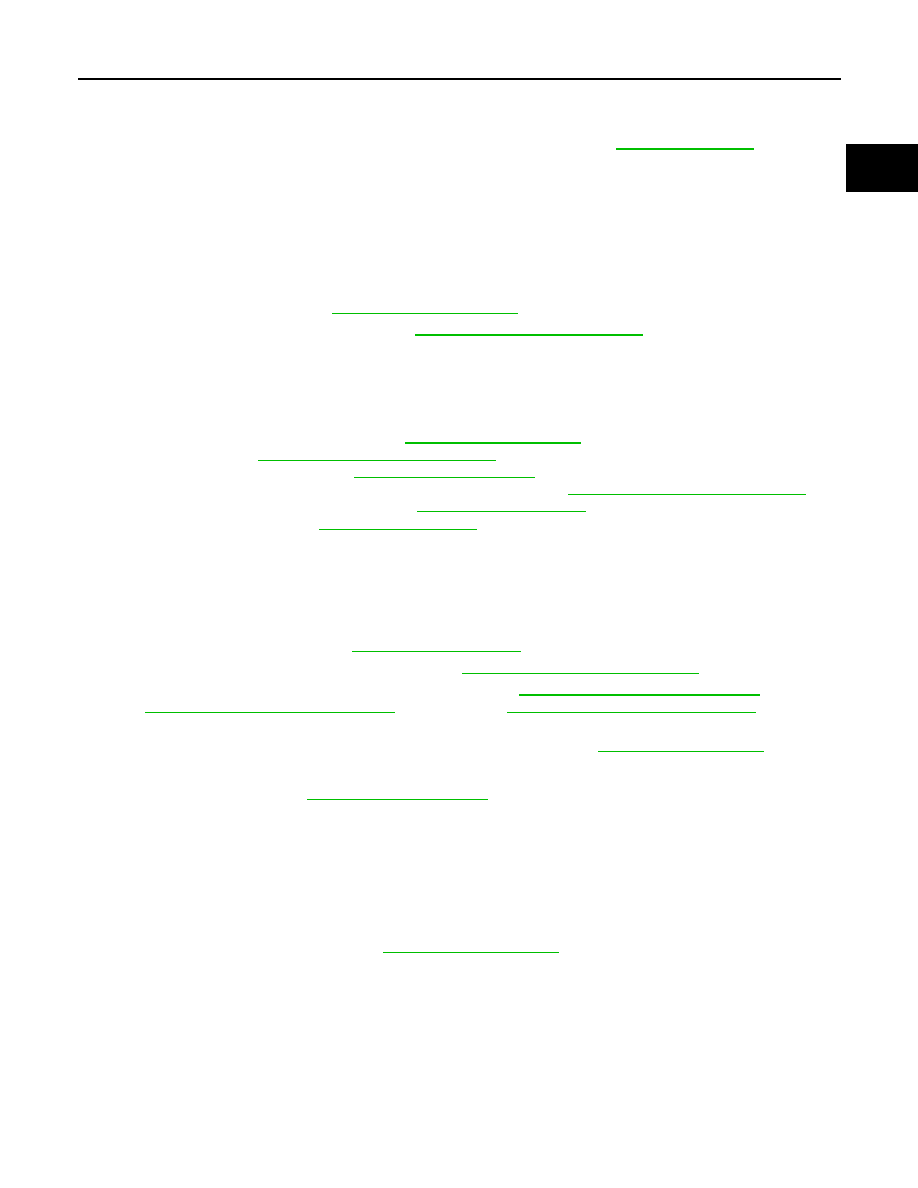Nissan Versa Sedan. Instruction - part 387

ENGINE ASSEMBLY
EM-83
< UNIT REMOVAL AND INSTALLATION >
[HR16DE]
C
D
E
F
G
H
I
J
K
L
M
A
EM
N
P
O
• Use either 2-pole lift type or separate type lift. If board-on type must be used, support the rear axle
jacking point with a transmission jack or similar tool before starting work, in preparation for the
backward shift of center of gravity.
• For supporting points for lifting and jacking point at rear axle, refer to
NOTE:
• When removing components such as hoses, tubes/lines, etc., cap or plug openings to prevent fluid from
spilling.
• Remove the engine and the transaxle assembly from the vehicle downward. Separate the engine and the
transaxle.
REMOVAL
Preparation
1. Release fuel pressure. Refer to
2. Drain engine coolant from radiator. Refer to
CO-8, "Draining Engine Coolant"
CAUTION:
• Perform this step when the engine is cold.
• Do not spill engine coolant on drive belts.
3. Remove the following parts:
• Front road wheels and tires (RH/LH).
• Front fender protector (RH/LH). Refer to
.
• Drive belt: Refer to
EM-16, "Removal and Installation"
• Battery and battery tray. Refer to
• Air duct (inlet), air duct, and air cleaner case assembly. Refer to
EM-25, "Removal and Installation"
.
• Radiator hose (upper and lower). Refer to
.
• Exhaust front tube. Refer to
.
Engine Room (LH)
1. Disconnect all connections of engine harness around the battery, and then temporarily secure the engine
harness into the engine side.
CAUTION:
Protect connectors against foreign materials during the operation by wrapping in a plastic bag.
2. Disconnect heater hoses. Refer to
.
3. Disconnect fuel feed hose at engine side. Refer to
EM-37, "Removal and Installation"
.
4. Disconnect control linkage cable from transaxle. Refer to
TM-23, "Removal and Installation"
(M/T mod-
els),
TM-236, "Removal and Installation"
TM-432, "Removal and Installation"
(CVT mod-
els).
5. Disconnect clutch tube on transaxle side from clutch damper. Refer to
Engine Room (RH)
1. Remove alternator. Refer to
.
2. Disconnect vacuum hose at engine side.
3. Remove EVAP hoses at engine side.
4. Remove air conditioner compressor from the engine with the piping connected. Temporarily position the
air conditioner compressor on the vehicle side with a rope without placing a heavy load on the piping.
Vehicle Underbody
1. Remove ground cable at transaxle side.
2. Remove drive shafts (RH/LH). Refer to
.